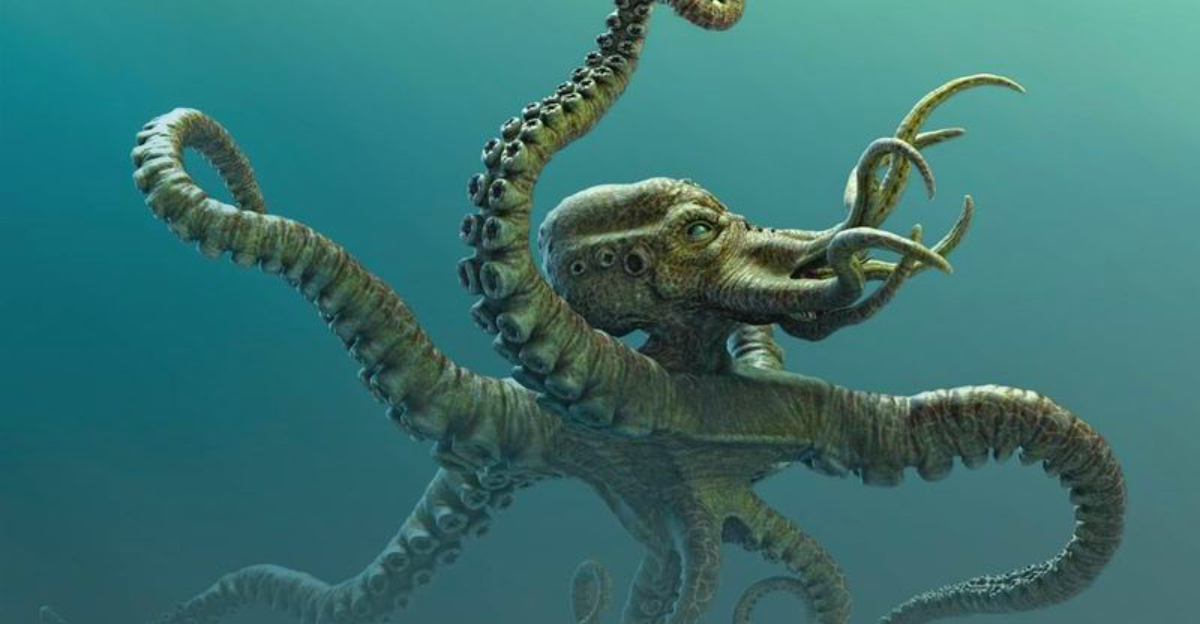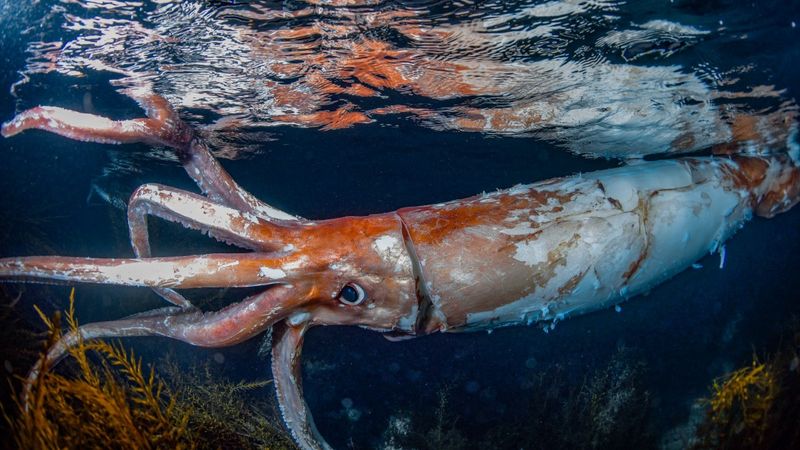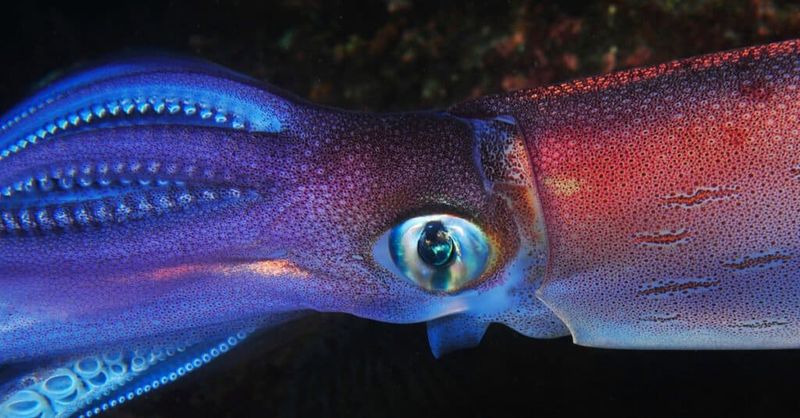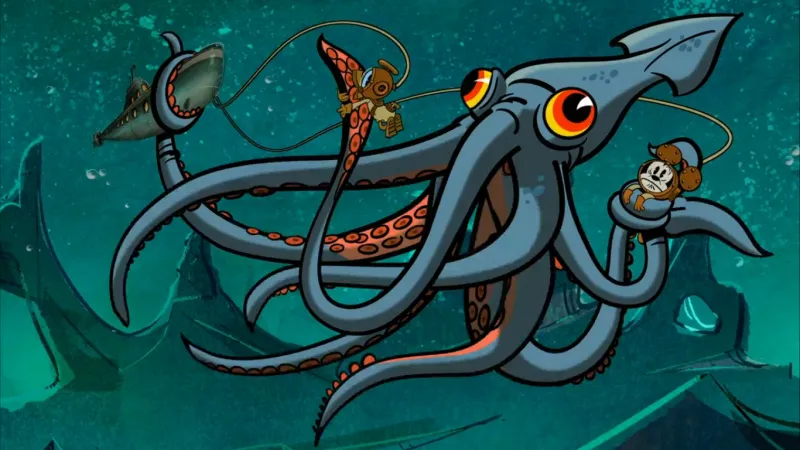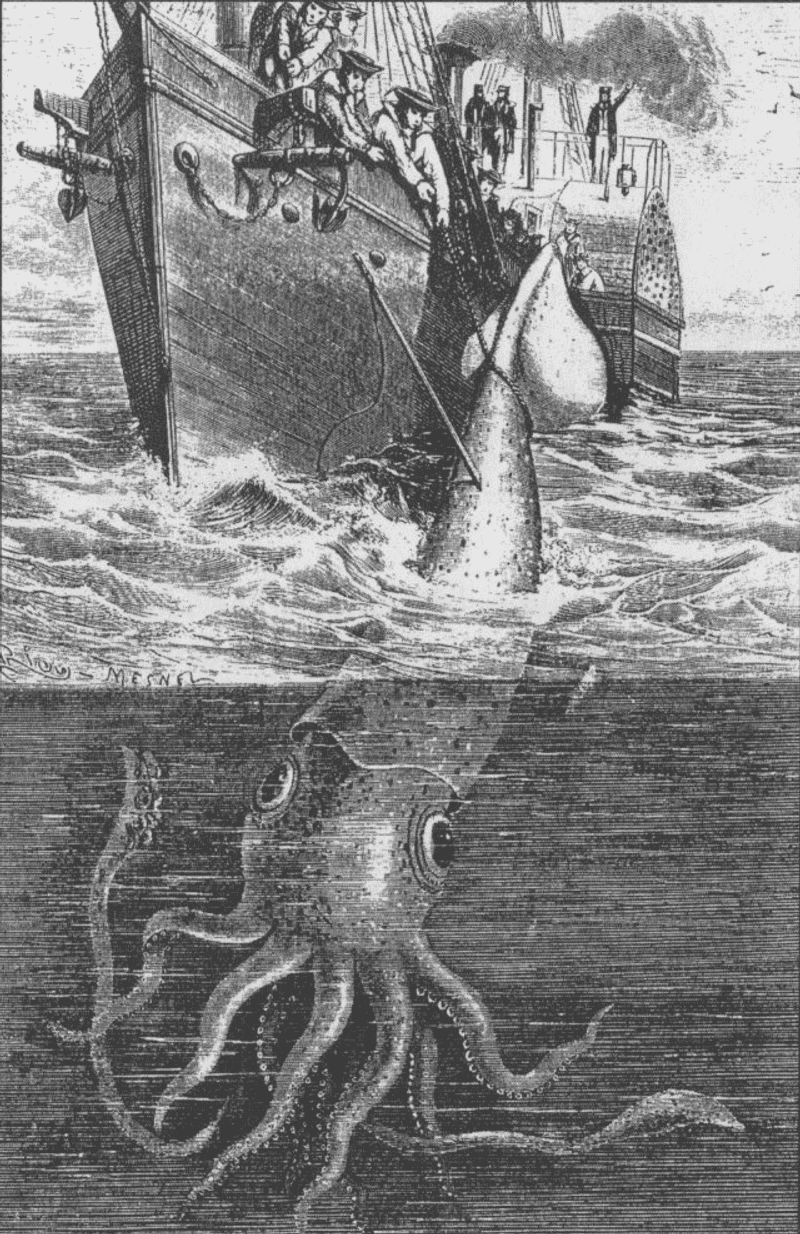For hundreds of years, sailors whispered terrifying tales of the Kraken—a monstrous sea beast with tentacles long enough to crush entire ships. These stories came from the cold northern waters, where fog and mystery made anything seem possible. Today, scientists have uncovered the truth behind this legendary creature, and what they found is almost as amazing as the myth itself. Modern technology and brave ocean explorers have brought us face-to-face with real giants lurking in the deep.
From Ancient Sailor Tales to Scientific Discovery
Sailors from Norway and Iceland once returned from the sea with wild stories about enormous creatures that could sink their boats. King Sverre of Norway wrote about one such encounter back in 1180, describing a beast so large it blocked out the sun and created massive waves. These weren’t just bedtime stories—people truly believed these monsters patrolled the ocean depths.
Old maps even showed illustrations of horned, tentacled beasts waiting to devour unlucky ships. Bishop Erik Pontoppidan described the Kraken as flat and round, with arms that could create deadly whirlpools. Fishermen claimed the creature rested on the ocean floor like a giant island.
What sailors actually saw were likely giant squids surfacing briefly before disappearing into darkness. Fear and imagination transformed these fleeting glimpses into legendary monsters that haunted seafaring cultures for centuries.
Meet the Real Giants: Architeuthis and Mesonychoteuthis
Giant squids, scientifically called Architeuthis dux, can stretch nearly 60 feet from tip to tail—about as long as a bowling lane! Their cousin, the Colossal Squid (Mesonychoteuthis hamiltoni), lives even deeper and has hooks on its tentacles. Both creatures possess the largest eyes in the animal kingdom, measuring up to 30 centimeters across—bigger than dinner plates.
These incredible animals live in the deep ocean where sunlight never reaches. Cold water and crushing pressure make their home nearly impossible for humans to visit without special equipment. Scientists estimate they hunt fish and smaller squid using lightning-fast strikes.
Unlike the ship-destroying monsters of legend, real giant squids avoid humans and spend their lives hunting in solitude. They’re ambush predators, not aggressive attackers, making them fascinating rather than frightening.
Catching Shadows: How Scientists Film the Invisible
Imagine trying to photograph a shy animal that lives two football fields beneath the ocean surface in complete darkness. That’s exactly the challenge marine biologists faced when hunting for live giant squid footage. Regular bright camera lights would scare these sensitive creatures away instantly, so scientists had to get creative.
Researchers developed special cameras using dim red lighting that giant squids can’t see well. They attached fake jellyfish that glowed with bioluminescence to attract curious squids. In 2021, a team successfully filmed giant squids swimming freely around 400 meters deep using this sneaky approach.
The breakthrough footage revealed how these animals move gracefully through their world, completely unaware they were being watched. This technology opened doors to studying creatures we once thought were impossible to observe alive.
Anatomy of a Legend: Eyes, Arms, and Adaptations
Those enormous eyes aren’t just for show—they help giant squids detect the faintest traces of light in the pitch-black deep ocean. Predators and prey both create tiny flashes of bioluminescence as they move, and giant squids can spot these signals from far away. Their eight arms and two longer tentacles work together like precision tools during hunting.
Each sucker on a giant squid’s tentacles contains thousands of tiny teeth arranged in rings. These grip slippery prey with incredible strength, preventing escape once contact is made. Their beaks, hidden at the center of their arms, can slice through tough fish flesh effortlessly.
Scientists also discovered that giant squids have three hearts and blue blood containing copper instead of iron. These strange adaptations help them survive in frigid waters where oxygen levels drop dangerously low.
The Kraken’s Cultural Tsunami: Movies, Books, and Games
The Kraken has smashed its way through centuries of storytelling, appearing everywhere from ancient Norse sagas to modern Hollywood blockbusters. Alfred Lord Tennyson wrote a famous poem about the sleeping terror beneath the waves. Pirates of the Caribbean brought the creature to life with spectacular special effects that terrified and thrilled millions of moviegoers worldwide.
Video games feature Kraken battles as epic boss fights where players must dodge tentacles and survive whirlpools. Fantasy novels describe Kraken attacks as apocalyptic events that reshape coastlines. Even sports teams and rum brands have borrowed the name for its powerful, mysterious appeal.
This cultural obsession keeps the legend alive even though science has explained the mystery. The Kraken represents humanity’s endless fascination with the unknown ocean and the monsters that might lurk in unexplored depths.
What We Still Don’t Know: Deep Ocean Mysteries Remain
Scientists have explored more of the moon’s surface than the deepest parts of our own oceans. The giant squid mystery might be solved, but countless other strange creatures remain undiscovered in the abyss. Some researchers believe animals even larger than giant squids might exist in trenches we’ve never visited with cameras or submarines.
Extreme pressure, freezing temperatures, and total darkness create an alien world right here on Earth. New species are discovered regularly, from ghostly fish with transparent heads to worms that thrive near volcanic vents. Each expedition reveals how little we truly understand about deep-sea ecosystems.
Climate change and deep-sea mining now threaten these fragile habitats before we’ve even cataloged what lives there. The Kraken legend reminds us that mystery still exists, and protecting unknown worlds matters as much as exploring them.
Why the Kraken Story Still Matters Today
The journey from monster myth to scientific reality teaches us powerful lessons about fear, curiosity, and discovery. Ancient sailors created the Kraken legend because they couldn’t explain what they saw in the ocean’s depths. Their stories reflected genuine wonder mixed with terror of the unknown—feelings that still drive exploration today.
Modern technology transformed scary legends into opportunities for understanding. Real giant squids turned out to be fascinating rather than frightening, proving that knowledge often replaces fear with respect. This same pattern happens throughout science as mysteries become explanations through patient observation and clever tools.
The Kraken’s legacy reminds us that Earth still holds secrets worth protecting and discovering. Every answered question opens doors to new mysteries, keeping the spirit of exploration alive for future generations of ocean scientists and adventurers.
